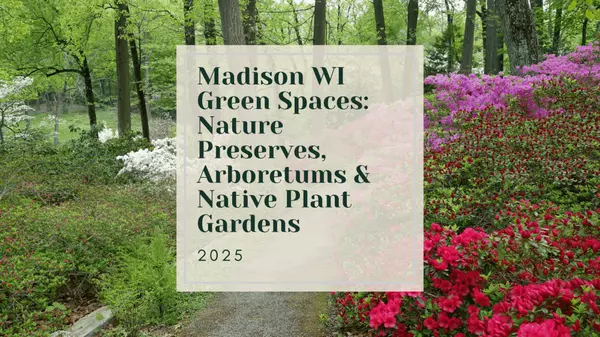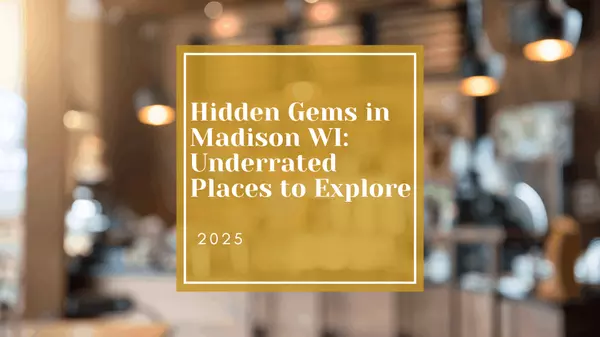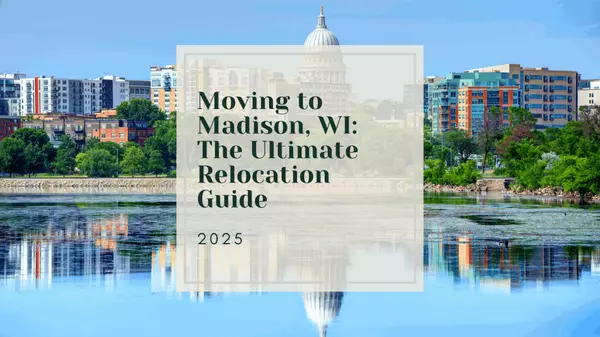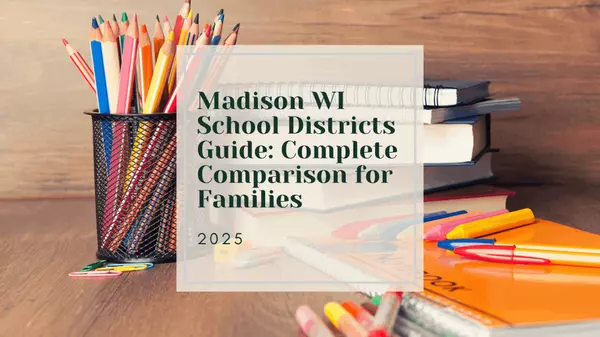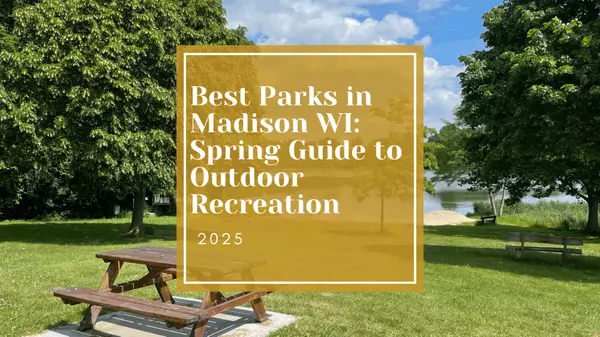Madison's Historic Downtown: Capitol Square & State Street Guide (2025)
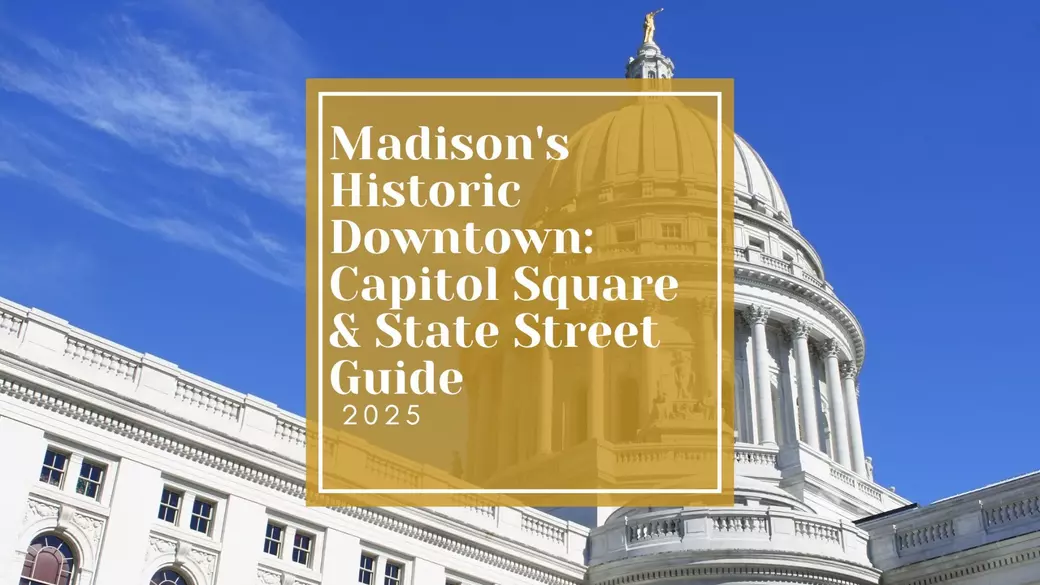
Madison's Historic Downtown: Capitol Square & State Street Guide (2025)
🔹 The Heart of Madison: An Introduction
Having grown up in Madison, downtown has always been my favorite area to explore. Capitol Square and State Street form the beating heart of Madison, creating a unique urban environment that balances historic charm with modern energy. As someone who has spent countless hours showing this area to relocating professionals, I've noticed how this distinctive downtown setup often becomes a deciding factor for many considering Madison as their new home.
The downtown area creates a remarkable first impression: a gleaming white Capitol building anchoring one end of the isthmus, with Lake Mendota to the north and Lake Monona to the south. From there, State Street stretches toward the University of Wisconsin campus, creating a pedestrian-friendly corridor filled with local businesses, restaurants, and cultural venues.
Downtown Madison offers a blend of government offices, professional firms, retail, dining, and entertainment, all within a walkable area. This guide covers what relocating professionals should know about downtown Madison, from practical considerations to local insights that will help you navigate this vibrant urban center.
🔹 Capitol Square: More Than Just Government
The Capitol Square forms the heart of downtown Madison, with the stunning Wisconsin State Capitol building at its center. This architectural masterpiece, completed in 1917, stands as the only granite dome capitol in the United States and is actually taller than the U.S. Capitol in Washington D.C.
💫 The Capitol Building Experience
The Capitol building itself is absolutely worth a visit, especially the observation deck when open (typically weekdays and Saturday mornings). The building offers free tours that take about 45 minutes and provide fascinating insights into Wisconsin's history and government. What many newcomers don't realize is that the Capitol is a working building where you can often observe state government in action, from committee hearings to full legislative sessions.
I've taken many clients who are considering a move to Madison through the Capitol building, and they're consistently impressed by the accessibility of state government here. You can walk right in most days (security checks are in place) and explore much of the building on your own.
⭐ Around the Square
The streets surrounding the Capitol form a perfect square with a perimeter of about four blocks. Each side of the square has its own character:
- East Washington Avenue (East Side): Houses several restaurants, bars, and the Madison Children's Museum, a fantastic resource for families with young children.
- Main Street (South Side): Features upscale dining options and leads toward Lake Monona and the Frank Lloyd Wright-designed Monona Terrace.
- West Washington Avenue (West Side): Home to government offices and connects to the rest of the downtown area.
- Mifflin Street (North Side): Features additional dining options and professional offices.
One thing I always tell people new to Madison: pay attention to which side of the Square you're meeting someone. "Let's meet at that coffee shop on the Square" isn't specific enough, as there are multiple coffee shops spread across different sides of the Square!
🎯 Capitol Square for Professionals
For those relocating for professional reasons, Capitol Square serves as a hub for government, law, finance, and consulting. Major employers around the Square include:
- State of Wisconsin agencies
- Dane County offices
- City of Madison offices
- Law firms
- Financial institutions
- Consulting firms
- Professional associations
The Square also hosts several co-working spaces that can be valuable for remote workers or entrepreneurs. Spaces like 100state and Industrious offer flexible work environments with networking opportunities.
💫 Events on the Square
The Capitol Square serves as Madison's community gathering place throughout the year. Some events you won't want to miss:
- Dane County Farmers' Market: The largest producer-only farmers' market in the U.S., circling the Capitol every Saturday morning from April through November. During winter, it moves indoors to the Monona Terrace.
- Concerts on the Square: Wednesday evenings in summer feature the Wisconsin Chamber Orchestra performing on the Capitol lawn, with thousands gathering for picnics.
- Art Fair on the Square: A July tradition showcasing hundreds of artists from across the country.
- Taste of Madison: A Labor Day weekend food festival featuring over 90 local restaurants.
- Winter Holiday Displays: Including the Holiday Tree in the Capitol rotunda and festive decorations around the Square.
What makes these events special is how they bring together all segments of Madison's population. I often run into clients at the Farmers' Market or Concerts on the Square, creating that small-town feel within our mid-sized city.
🔹 State Street: Madison's Cultural Corridor
State Street connects the Capitol Square to the University of Wisconsin campus, creating a pedestrian mall that spans approximately eight blocks. While cars aren't permitted (except for delivery vehicles, taxis, and buses), the street buzzes with activity from pedestrians, cyclists, and the occasional skateboarder.
💫 The State Street Experience
What makes State Street unique is its focus on local businesses. While you'll find some national chains, the majority of establishments are locally owned. This creates a distinctive character that sets Madison apart from cities dominated by national retailers.
As you walk from the Capitol toward campus, you'll notice the atmosphere gradually shifting from professional to more university-oriented. This transition creates different zones along State Street, each with its own vibe:
- Upper State (closer to the Capitol): More upscale dining, professional services, and boutiques.
- Mid State: A mix of restaurants, specialty shops, and entertainment venues.
- Lower State (closer to campus): More casual dining, campus-oriented retail, and entertainment venues popular with students.
This diversity means State Street has something for everyone, regardless of age or interests.
⭐ Dining & Coffee Culture
State Street and the immediately surrounding area host over 100 restaurants, cafes, and bars. Some standout options for professionals include:
- Graze: Farm-to-table cuisine with Capitol views
- The Old Fashioned: Wisconsin comfort food and local beers
- Tornado Room: Classic steakhouse experience
- Merchant: Craft cocktails and seasonal menu
- Marigold Kitchen: Breakfast and lunch favorite
- Cento: Upscale Italian dining
Coffee culture is strong in Madison, with excellent local options like:
- Colectivo Coffee: Spacious seating with outdoor patio
- Ancora Coffee: One of Madison's original craft coffee shops
- Michelangelo's Coffee House: Cozy atmosphere with art displays
- Bradbury's: Known for crepes and excellent espresso
What I appreciate about downtown dining is the range of options for different situations, from quick lunch meetings to impressive client dinners to casual family brunches.
🎯 Cultural Attractions
State Street and the surrounding downtown area offer numerous cultural attractions:
- Overture Center for the Arts: Madison's premier performing arts venue hosting Broadway shows, concerts, and local performances.
- Madison Museum of Contemporary Art: Free admission and features rotating exhibitions plus a rooftop sculpture garden.
- Wisconsin Historical Museum: Exhibits on state history, from indigenous cultures to modern times.
- Wisconsin Veterans Museum: Honors the state's military history through artifacts and personal stories.
- Central Library: A beautiful modern library with community spaces and events.
These cultural institutions provide both entertainment and educational opportunities for families, making downtown a go-to destination for enriching experiences.
💫 Shopping & Services
While State Street isn't Madison's primary shopping destination (West Towne and East Towne malls serve that purpose), it offers specialty shopping experiences:
- Little Luxuries: Unique gifts and home goods
- Madison Modern Market: Contemporary design items
- Anthology: Local art and Wisconsin-themed gifts
- A Room of One's Own: Independent bookstore
- Fontana Sports: Outdoor gear for Wisconsin adventures
- University Book Store: Much more than just textbooks
For professionals settling into Madison, downtown also offers practical services:
- Several banks and credit unions
- Walk-in medical clinics
- Fitness facilities
- Salons and spas
- Phone and computer repair shops
- Professional services (printing, notary, etc.)
🔹 Living Downtown: Is It Right for You?
Downtown Madison offers various housing options, from historic apartments to modern luxury condominiums. Living downtown provides walkability to work, dining, and entertainment, but comes with considerations worth noting.
⭐ Downtown Housing Options
The downtown housing market includes:
- Historic apartments: Often in renovated buildings with character and charm
- Modern luxury condos: Particularly around the Square and near lakes
- Mixed-use developments: Newer buildings with residential units above commercial space
- University-adjacent housing: More affordable but often with a more collegiate atmosphere
Housing costs downtown are generally higher than Madison's outlying neighborhoods, with premium prices for Capitol or lake views. One-bedroom apartments typically start around $1,300-1,800, while luxury condos can exceed $500,000 for purchase.
💫 Downtown Living: Pros and Challenges
Pros:
- Walkable access to work, dining, and entertainment
- Minimal need for a car (though most residents still have one)
- Front-row access to downtown events and activities
- Vibrant urban lifestyle
Challenges:
- Higher cost per square foot than outlying neighborhoods
- Limited outdoor space (though public parks help compensate)
- Parking can be expensive and sometimes limited
- Street noise, particularly during events or weekends
- Fewer family-oriented amenities compared to suburban neighborhoods
For relocating professionals, downtown living works best for:
- Singles or couples without children
- Empty nesters
- Those prioritizing walkability and urban amenities
- Professionals working downtown who want to minimize commuting
Families with children typically choose near-downtown neighborhoods like Tenney-Lapham, Marquette, or the near west side, which offer more space while maintaining reasonable access to downtown.
🔹 Getting Around Downtown Madison
Downtown Madison is designed for multi-modal transportation, making it easy to navigate without always relying on a car.
💫 Parking Realities
If driving downtown, it helps to understand the parking situation:
- Street Parking: Metered spots with time limits, monitored Monday-Saturday
- Public Garages: Several city-operated ramps with hourly and monthly options
- Private Lots: Various options, some offering evening flat rates
- Residential Parking: Permits available for downtown residents
For those working downtown, monthly parking passes in public garages currently range from $150-250 depending on location. Many downtown employers offer parking subsidies as part of compensation packages.
⭐ Public Transportation
Madison offers strong public transportation options:
- Metro Transit: Bus system covering downtown and connecting to surrounding areas
- Madison B-Cycle: Bike sharing program with stations throughout downtown
- Taxis and Rideshares: Readily available throughout the downtown area
The bus system is particularly useful during winter months when biking or walking becomes less appealing. Many downtown professionals use the bus for their daily commute from surrounding neighborhoods.
🎯 Biking and Walking
Madison consistently ranks as one of America's most bicycle-friendly cities, and downtown exemplifies this:
- Dedicated bike lanes on most downtown streets
- Bike racks abundant throughout downtown
- Capital City Trail connects downtown to larger bike path network
Walking is equally convenient, with:
- Well-maintained sidewalks
- Pedestrian-friendly crossings
- The car-free State Street corridor
During winter, downtown sidewalks are typically cleared quickly after snowfalls, though proper winter footwear is still essential.
🔹 Downtown Through the Seasons
Downtown Madison transforms with the seasons, each offering distinct experiences worth noting for newcomers.
💫 Summer: Downtown's Prime Season
Summer brings downtown to life with:
- Outdoor dining patios filling with people
- Concerts on the Square drawing thousands
- Farmers' Market at its peak
- Lake activities accessible from downtown
- Festivals nearly every weekend
The energy is palpable from June through August, with long days and warm evenings perfect for exploring. This is when downtown truly shines.
⭐ Fall: Academic Energy
Fall brings:
- University students returning, adding energy
- Football Saturdays creating festive atmospheres
- Farmers' Market showcasing harvest bounty
- Comfortable temperatures for exploration
- Beautiful foliage in nearby parks
The academic calendar influences downtown's rhythm, with noticeable increases in activity when UW is in session.
🎯 Winter: Cozy Downtown
Winter transforms downtown into:
- Holiday decorations throughout downtown
- Indoor farmers' market at Monona Terrace
- Ice skating at nearby Tenney Park
- Bustling cafes and restaurants offering warm retreats
- Less crowded streets, especially during extreme cold
Winter requires adaptation but offers its own charm. Downtown businesses excel at creating cozy environments during cold months.
💫 Spring: Reawakening
Spring brings:
- Outdoor seating gradually returning
- Farmers' Market moving back outdoors
- Increased pedestrian activity
- Special events celebrating winter's end
- Academic year culmination with graduation events
The transition from winter to spring creates a palpable sense of optimism downtown.
🔹 Final Thoughts: Is Downtown Madison Right for You?
After showing countless relocating professionals around downtown Madison, I've noticed patterns in who connects most strongly with this area:
Downtown Madison tends to resonate most with professionals who:
- Value walkability and urban amenities
- Enjoy cultural activities and dining experiences
- Appreciate historic architecture alongside modern conveniences
- Seek community connection through public spaces and events
- Desire a vibrant but manageable urban environment
While downtown living isn't for everyone, the downtown area serves as a central gathering place for all Madison residents. Even those choosing to live in surrounding neighborhoods or suburbs find themselves drawn downtown for work, dining, entertainment, and community events.
What makes downtown Madison special is its human scale. Unlike overwhelming metropolitan downtowns, Madison's downtown remains navigable and approachable while still offering sophisticated urban amenities. The balance creates an environment that works equally well for a quick lunch meeting, family outing to the Children's Museum, or evening at the Overture Center.
As you consider Madison for your next professional move, I encourage you to spend time exploring downtown at different times of day and across different seasons if possible. It's a microcosm of what makes Madison special – the blend of professionalism, education, culture, and genuine community that defines our city.

Categories
Recent Posts



